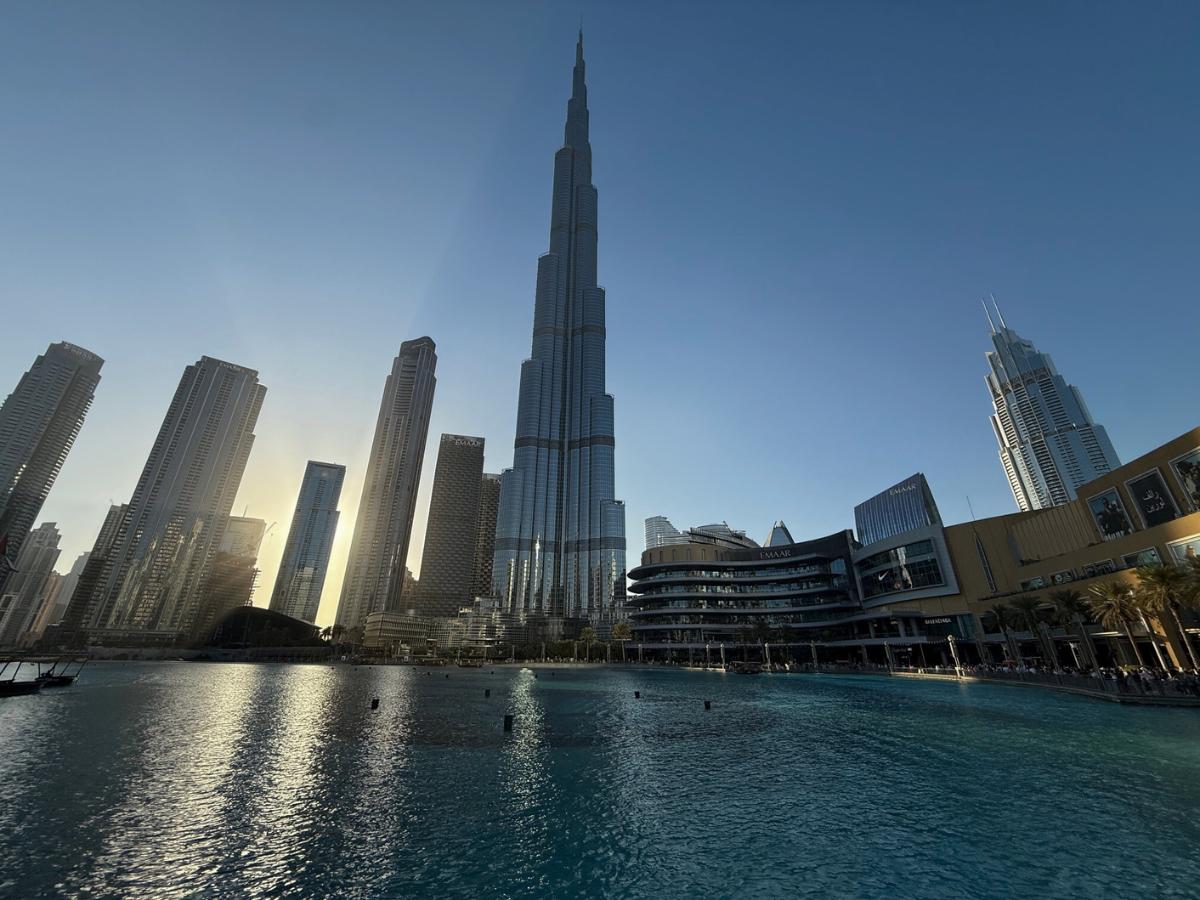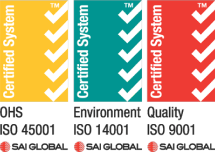Fibre Reinforced Polymer (FRP) utility poles are the answer to aging infrastructure and rising climate resilience demands, offering a lightweight yet durable alternative to traditional materials.
Wagners Composite Fibre Technologies (CFT), Global Utilities Lead, James Lorrimer witnessed this firsthand when he travelled to Dubai in early April for Middle East Energy.
This year’s global energy conference attracted 40,000+ trade and buyer visits from 170 countries, proving it is a key industry event that is paving the way for innovation through networking and business development.
“The middle east is investing heavily in infrastructure, renewables, and smart cities. It’s a crossroads for east-west trade and innovation, making it ideal for piloting and scaling new technologies like FRP poles,” James Lorrimer said.
“Many middle eastern utilities are skipping outdated systems altogether and moving straight to next generation infrastructure. Showing what’s possible when innovation is backed by serious investment,” Mr Lorrimer said.
“Climate events are intensifying and traditional materials are failing faster. Not to mention the quality of current timber poles being subpar. Utilities can no longer afford short-term fixes,” he said.
“Poles are critical infrastructure. As cities expand and demand spikes, failures from fire, termites, and corrosion cause major outages. FRP offers a future-proof alternative with minimal disruption.”
“FRP poles are lightweight, corrosion-free, fire-resistant, and offer a lifespan of up to 80 years. They require less maintenance, are easier to install, and reduce long-term operational costs.”
“Traditional poles can’t withstand bushfires, cyclones, and salt pollution but FRP poles remain structurally sound in these conditions, making them ideal for networks planning for a changing climate.”
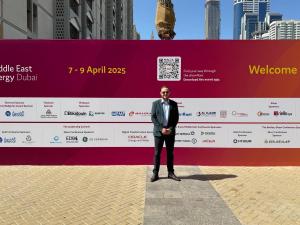 Pictured – Wagners CFT Global Utilities Lead, James Lorrimer at Middle East Energy.
Pictured – Wagners CFT Global Utilities Lead, James Lorrimer at Middle East Energy.
Discussions during the event solidified the need for FRP utility poles as they are a corrosion and termite resistant solution aligned with proactive asset management and addressing ageing infrastructure and lifecycle cost efficiency in the utilities sector.
“Key themes at the event included climate resilient infrastructure and the shift from reactive to proactive asset management as infrastructure is nearing end of life in lots of distribution companies. FRP poles fit directly into these discussions with their fire, corrosion and inert behaviour,” James Lorrimer said.
“Smart grid integration, predictive maintenance systems using AI, and durable infrastructure components are new technologies that could have a significant impact on the global utilities sector,” Mr Lorrimer said.
“The urgent challenge for utilities is maintaining infrastructure resilience amidst extreme weather while balancing decarbonisation goals and supply constraints. This is where FRP poles offer a strong value proposition,” he said.
“Attendees noted the high cost and logistical difficulty of replacing ageing timber and concrete poles, particularly in remote or coastal areas. Termite damage, rot, corrosion, and fire vulnerability were common pain points.”
“Questions were raised around upfront cost versus long term savings, testing requirements, and supply scalability. Wagners CFT can provide a cost benefit that is likely to support a favorable case for several high gross domestic product (GDP) countries to transition from existing infrastructure to FRP utility poles.”
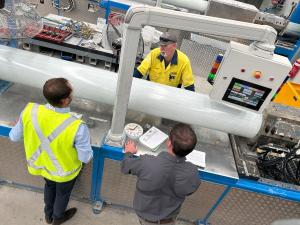 Pictured – FRP utility pole being pultruded at Wagners CFT manufacturing facility in Wellcamp, Queensland.
Pictured – FRP utility pole being pultruded at Wagners CFT manufacturing facility in Wellcamp, Queensland.
It is predicted the utilities sector will rapidly change over the next 2-5 years as new regulatory frameworks and climate policies are implemented and global awareness grows.
“Many utilities are moving into pilot FRP pole projects now. I expect broader implementation within 12–24 months, especially as grid modernisation accelerates,” James Lorrimer said.
“The global utility pole market will reach its next major milestone likely by 2027, as regulatory frameworks and climate policies force utilities to consider longer term infrastructure investments,” Mr Lorrimer said.
“Within the next 5 years I expect to see a widespread shift toward using more sustainable or advanced materials for utility poles, especially in coastal, fire-prone, and rapidly urbanising regions where traditional materials are failing,” he said.
“Adoption of FRP utility poles is already underway in Australia, New Zealand, America and some European countries. I expect FRP to become mainstream in parts of the Middle East, South-East Asia, and South America over the next 3–5 years. The Middle East is currently exploring adoption with large scale projects likely to ramp up by 2026 due to the change in resilience.”
“As volumes increase and global awareness grows, cost efficiencies will improve for FRP utility poles.”
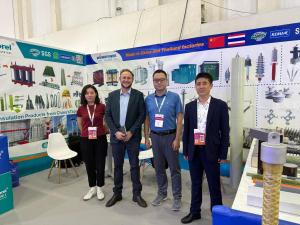 Pictured – James Lorrimer with MEE exhibitors from Wishpower.
Pictured – James Lorrimer with MEE exhibitors from Wishpower.
Due to a shortage of traditional materials and the increased support of renewable energy generation, many countries across the globe could benefit from FRP utility poles and their reduced maintenance cycles and improved environmental performance.
“In the energy sector, I see the biggest opportunities for growth geographically in regions that are actively investing in grid modernisation, renewable energy integration, and infrastructure resilience. Particularly across Australia, New Zealand, Europe, North America, and Scandinavia,” James Lorrimer said.
“These markets are facing significant timber supply challenges, increased focus on fire resilience, and an urgent need to future-proof their networks, which aligns perfectly with the advantages of FRP poles,” Mr Lorrimer said.
“In addition to timber supply shortages, the effectiveness of creosote treatments on timber poles has significantly decreased resulting in timber poles deteriorating quicker and needing replacing sooner,” he said.
“By sector, the most promising growth areas are in distribution networks supporting renewable energy generation, rural and remote grid hardening, and electrification projects such as EV charging infrastructure.”
“Utilities are increasingly seeking solutions that offer longevity, reduced maintenance, and improved environmental performance. All areas where FRP poles deliver distinct benefits over traditional materials like timber, steel, and concrete.”
“Growth will be driven by the global shift towards more sustainable, resilient, and efficient energy infrastructure, and FRP poles are ideally positioned to support that transformation.”
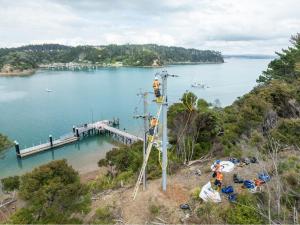 Pictured – Wagners CFT utility pole being installed in New Zealand.
Pictured – Wagners CFT utility pole being installed in New Zealand.
FRP utility poles will help countries meet their 2030 targets as FRP contributes to decarbonisation in construction and reducing global warming through less embodied carbon.
“The Middle East is catching up rapidly in terms of energy transition efforts. Europe remains ahead from a policy and regulatory standpoint, having embedded renewable energy targets, decarbonisation strategies, and sustainability mandates for many years,” James Lorrimer said.
“Countries such as the UAE and Saudi Arabia are taking significant steps to diversify their energy mix, invest in renewable generation, and build more resilient and sustainable infrastructure,” Mr Lorrimer said.
“Major initiatives like the UAE’s Energy Strategy 2050 (Net-Zero Emissions) and Saudi Arabia’s Vision 2030 (reducing dependence on oil) show a clear commitment to reducing reliance on traditional hydrocarbons,” he said.
“The region is not just following trends but it is positioning itself as a leader in large-scale project execution, especially in solar, hydrogen, and smart grid developments.”
“While policy frameworks may still be evolving compared to Europe, the Middle East’s scale of ambition, speed of infrastructure roll out, and investment appetite are positioning it as an increasingly influential player in the global energy transition.”
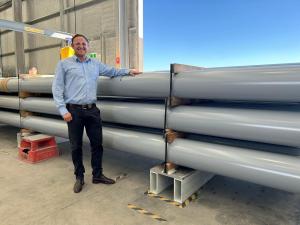 Pictured – James Lorrimer with FRP utility poles ready for transportation.
Pictured – James Lorrimer with FRP utility poles ready for transportation.
As an Australian owned manufacturing business with offices around the world creating high quality, modern materials, Wagners CFT wants to provide assistance to countries ready to make the transition to FRP utility poles.
“Wagners proudly represented Australian made FRP poles at the Middle East Energy conference highlighting Wagners CFT’s position as a global leader in this space,” James Lorrimer said.
“Utility poles in regions with high timber usage need modernisation. South America, parts of Asia, and the U.S are all facing aging infrastructure, frequent replacements, and fire/corrosion issues. Fibre Reinforced Polymer (FRP) utility poles are suitable in any country especially along coastal and tropical zones,” Mr Lorrimer said.
“Australia, Europe, and America have already led the way for large-scale deployment of FRP utility poles. Next is likely the Middle East, UAE and Oman. This is due to their rapid investment in infrastructure and environmental extremes that demand more durable solutions,” he said.
“Asset managers, sustainability engineers, and utilities transitioning from traditional wood and concrete are supporting the switch from traditional wooden or concrete poles to FRP poles. Particularly those aiming for carbon-neutral targets and lower lifecycle maintenance or those affected by fire-prone, cyclone-affected, or highly corrosive environments.”
“The global focus on resilience, environmental, social and governance (ESG) reporting, and whole of life asset costing aligns perfectly with what FRP poles deliver. With proven field reporting and expanding global demand, the timing is ideal for early adoption.”
For more information on Wagners CFT utility poles https://www.wagnerscft.com.au/solutions/electrical-infrastructures/utility-poles/
To download the Wagners CFT utility pole brochure https://www.wagnerscft.com.au/app/uploads/2024/05/wagners-cft-utility-pole-brochure.pdf
To connect with Wagners CFT Global Utilities Lead, James Lorrimer https://www.linkedin.com/in/james-lorrimer-257412190/
To read Wagners CFT Environmental Product Declaration (EPD) https://www.wagnerscft.com.au/app/uploads/2024/05/sp10246-wagners-epd-pultruded-gfrp_nov23-1.pdf
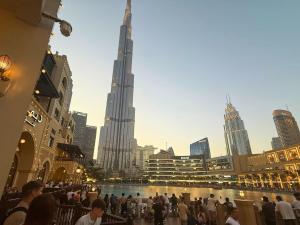 Pictured – The Burj Khalifa in Dubai, the tallest building in the world standing at 828 metres.
Pictured – The Burj Khalifa in Dubai, the tallest building in the world standing at 828 metres.
